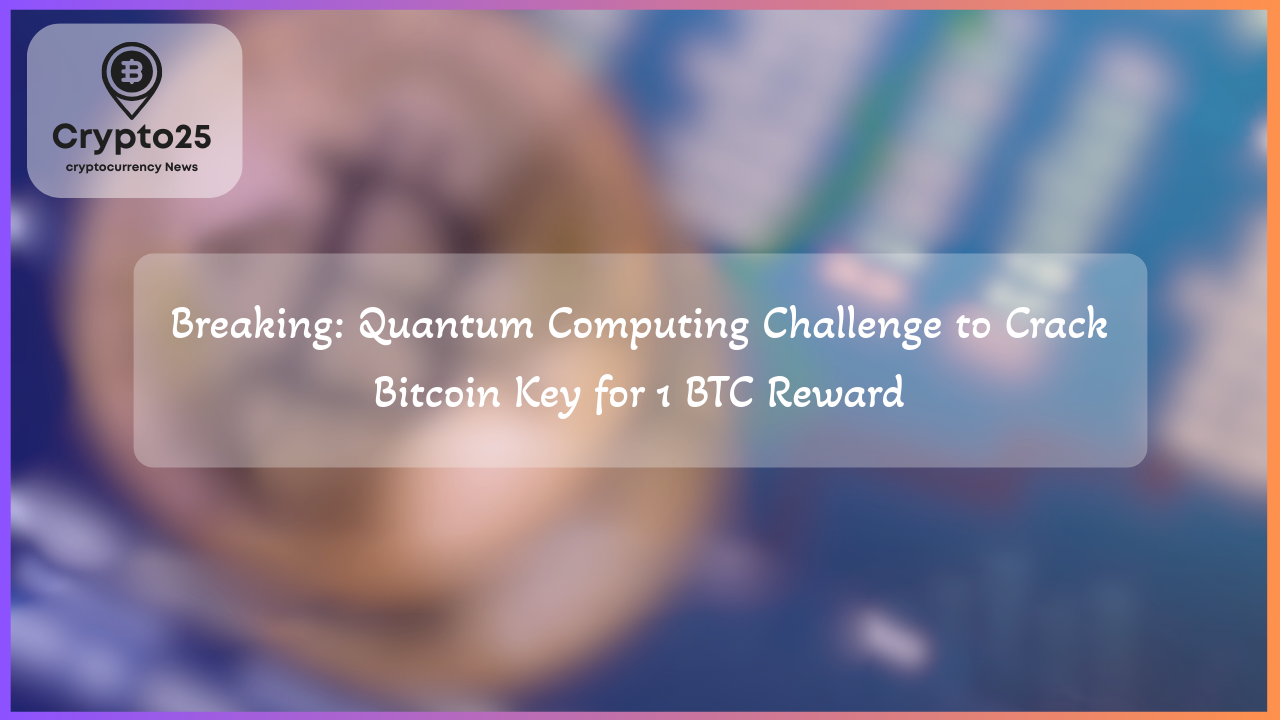
Quantum computing and cryptocurrency intersect in complex and evolving ways, with new advancements posing both significant opportunities and considerable risks. Project 11, a quantum research-focused company, recently launched the Q-Day Prize competition to analyze quantum computing’s potential impact on Bitcoin’s cryptography. The initiative challenges participants to break portions of Bitcoin’s ECC key using Shor’s algorithm, offering a prize of 1 BTC. This endeavor highlights the critical need to address the looming quantum threat.
—
## Quantum Cryptography and the Mission Behind the Q-Day Competition
Quantum computing has revolutionized computational power, solving problems in moments that would take traditional computers decades to achieve. This paradigm shift, however, introduces direct challenges to blockchain security, particularly for Bitcoin (BTC) and Ethereum (ETH). Both cryptocurrencies depend on elliptic curve cryptography (ECC) for their transaction processes, a method that is increasingly vulnerable to quantum decryption techniques like Shor’s algorithm.
Although many see quantum advancements as existential threats to cryptocurrency, Project 11 emphasizes that their primary objective is to benchmark the realistic danger posed by quantum platforms. This effort aims to predict vulnerabilities, estimate risk levels, and inspire preemptive solutions. As stated in the organization’s public announcement, the ultimate mission extends beyond solving isolated cryptographic challenges; it is about protecting over six million bitcoins—currently at risk due to advancements in quantum technologies.
The competition involves a meticulously designed task: breaking toy versions of Bitcoin keys ranging from 1 to 25 bits. Although these scaled-down keys differ from Bitcoin’s standard 256-bit protection, even the slightest success—such as cracking a 3-bit key—could provide valuable benchmarks. This transparency-driven initiative demonstrates the unprecedented utility of stress testing in preparing cryptocurrencies to withstand future challenges from quantum innovations.
—
## Why Transparency is Crucial for Quantum Resistance
Project 11 underscores the importance of fostering transparency in tackling the quantum threat. By crowd-sourcing cryptography enthusiasts to rigorously test Bitcoin’s cryptographic backbone, the initiative brings attention to a critical yet under-examined vulnerability. Public contributions ensure the results are unambiguous, auditable, and viewed through an unbiased lens. This process effectively mirrors the ethos of open-source software development, granting global stakeholders access to validated findings.
The company has also stressed the inevitability of quantum computing’s widespread influence on financial security systems. In their announcement, Project 11 explained their reasons for bringing this matter into the public domain:
“Rather than waiting for quantum breakthroughs in secrecy, we believe in confronting these challenges head-on. The Q-Day Prize solidifies our collective understanding of cryptanalytic risks and ensures we’re industry-ready when those risks evolve.”
By creating an open competition, Project 11 educates the crypto community about quantum vulnerabilities while urging robust measures to secure digital assets. In fact, attention from this event might accelerate the adoption of quantum-resistant blockchain technologies and post-quantum cryptography (PQC), paving the way for global implementation before quantum threats fully materialize.
| Threat Assessment | Details |
|---|---|
| Market Impact | Potential exposure of over $1.2 trillion in cryptocurrency market cap. |
| Current Tech Threshold | Quantum systems need approximately 2,000 qubits to break ECC security. |
—
## Is the Quantum Threat to Bitcoin Real?
Despite the rapid emergence of quantum computing, the current threat to Bitcoin and other cryptocurrencies remains theoretical. No one has successfully broken any real-world ECC keys, either through classical or quantum methods. However, leading institutions like the National Institute of Standards and Technology (NIST) are transitioning to post-quantum cryptography frameworks, signaling that industry stakeholders are proactively preparing for potential risks. Additionally, wallet providers have begun developing quantum-resistant hardware for added security.
Technological constraints still limit quantum computers. For instance, Google’s advanced quantum chip, Willow, achieves 105 qubits, while IBM’s Heron reaches 150 qubits—far below the 2,000-qubit threshold needed to breach ECC encryption. Nevertheless, innovators worldwide—like QuEra specializing in analog quantum systems—are progressively bridging this gap. As these technologies mature, the crypto sector must adopt protective measures to future-proof digital assets.
Thought leaders in the blockchain industry have also shared differing perspectives on the quantum threat. Tether CTO Paolo Ardoino, for example, expressed optimism, suggesting that by the time quantum systems are capable of such feats, the crypto industry will have transitioned to quantum-resistant protocols. Moreover, the ability to recover lost wallets could reshape narratives around quantum technology as both harmful and beneficial.
—
## The Future of Blockchain Amid Quantum Advancements
The looming arrival of quantum computing has ignited urgent conversations about Bitcoin’s longevity. Experts predict large-scale breakthroughs between 2030 and 2050, providing some leeway for innovators to develop preemptive solutions. For now, users can protect their digital holdings by leveraging cold storage, multisignature wallets, and quantum-resistant systems. As quantum computing progresses, initiatives like Project 11’s Q-Day Prize will help illuminate the practical realities and force the cryptocurrency ecosystem to evolve. The future of blockchain technology depends on readiness, adaptability, and innovation against this quantum backdrop.
